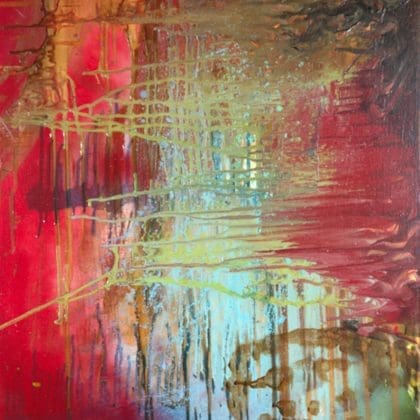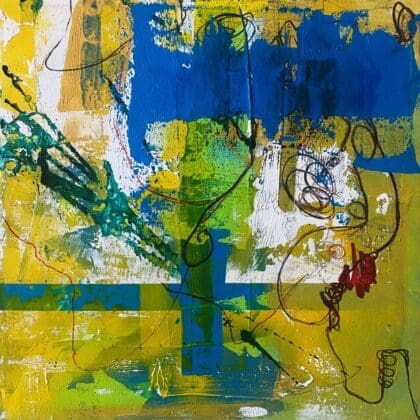Planning a juried art show can be an exciting yet challenging endeavor. Whether you’re an artist, curator, or organizer, creating a successful event requires careful planning, collaboration, and attention to detail. This guide will walk you through the essential steps to ensure your juried art show is a success, fostering a vibrant community of artists and art lovers.
1. Establish Clear Objectives
Setting clear goals for your juried art show will guide your planning process and help you communicate effectively with collaborators.
A. Define Your Purpose
Highlight Emerging Talent: Showcase new or underrepresented artists.
Promote Community Engagement: Foster connections between artists and the community.
Generate Sales: Create opportunities for artists to sell their work.
B. Set Measurable Goals
Visitor Attendance: Aim for a specific number of attendees based on venue capacity.
Sales Targets: Establish a financial goal for artwork sales.
Engagement Metrics: Track social media shares, newsletter sign-ups, and feedback forms.
2. Choose a Suitable Venue
The right venue can significantly impact the success of your juried art show. Consider factors such as location, size, and accessibility.
A. Evaluate Potential Locations
Art Galleries: Established galleries often attract art enthusiasts and can provide credibility.
Community Centers: Local centers can foster community engagement and support.
Outdoor Spaces: Consider parks or public spaces for a more relaxed atmosphere.
B. Assess Venue Requirements
Space for Artwork: Ensure there’s enough room to display pieces effectively without overcrowding.
Accessibility: Choose a location that is easily accessible to all visitors, including those with disabilities.
Amenities: Look for venues that offer necessary facilities such as lighting, restrooms, and parking.
3. Develop a Call for Artists
A well-crafted call for artists is essential to attract diverse and high-quality submissions for your juried show.
A. Create Clear Guidelines
Submission Criteria: Define the types of artwork accepted (e.g., mediums, sizes, themes).
Application Process: Outline how artists should submit their work, including deadlines and required materials.
B. Promote Your Call
Leverage Social Media: Use platforms like Instagram and Facebook to reach a broader audience.
Network with Art Communities: Share your call in local artist groups, newsletters, and community bulletin boards.
Collaborate with Influencers: Partner with local art influencers to amplify your message.
4. Assemble a Judging Panel
A credible judging panel is crucial to ensuring the integrity of your juried art show.
A. Select Qualified Judges
Art Experts: Include curators, established artists, or educators with a strong background in the arts.
Diverse Perspectives: Aim for a diverse panel to bring different viewpoints and experiences to the judging process.
B. Establish Judging Criteria
Artistic Merit: Evaluate the creativity, technical skill, and originality of the artwork.
Relevance to Theme: Consider how well each piece aligns with the show’s theme or objectives.
Overall Impact: Assess the emotional and aesthetic impact of the work.
5. Plan the Event Logistics
Organizing the logistics of your juried art show is essential for a seamless experience for both artists and attendees.
A. Create a Timeline
Develop a Checklist: Outline tasks leading up to the event, from marketing to installation.
Set Deadlines: Assign deadlines for each task to ensure everything stays on track.
B. Coordinate Event Details
Artwork Installation: Plan how and when artwork will be installed before the opening.
Opening Reception: Organize an event to celebrate the opening, including refreshments, entertainment, and speeches.
Promotional Materials: Prepare brochures, flyers, and signage to guide visitors during the show.
6. Market Your Show Effectively
Effective marketing can draw in a larger audience and create buzz around your juried art show.
A. Utilize Digital Marketing
Create an Event Page: Use platforms like Facebook Events or Eventbrite to promote your show.
Email Campaigns: Send newsletters to your subscriber list with event details and artist highlights.
B. Engage with Local Media
Press Releases: Distribute press releases to local newspapers, magazines, and art blogs.
Media Outreach: Invite journalists or bloggers to cover your event, offering them a preview of featured artists.
Conclusion: Take Action and Create!
Planning a juried art show requires dedication and teamwork, but the rewards of showcasing talented artists and connecting with the community are immense. By establishing clear objectives, choosing a suitable venue, developing a compelling call for artists, assembling a credible judging panel, coordinating logistics, and marketing your show effectively, you can create an event that leaves a lasting impact.
Now it’s time to take action: Gather your collaborators and start planning your juried art show today! Set your objectives, scout for venues, and get the word out to artists and the community. Your show could be the next great celebration of creativity—don’t wait to make it happen!
A comprehensive guide to planning juried art.
Last updated on September 23, 2024Master the art of organizing successful juried exhibitions. From selecting jurors to managing submissions, this guide covers every aspect of planning and executing a prestigious art show that attracts top talent and discerning audiences.
↜ back to all journal entries
Latest Articles
for artists
[category_posts category=”creators”]
for collectors
[category_posts category=”collectors”]
for collaborators
[category_posts category=”collaborators”]
Latest Articles
for artists
[category_posts category=”creators”]
for collectors
[category_posts category=”collectors”]
for collaborators
[category_posts category=”collaborators”]




